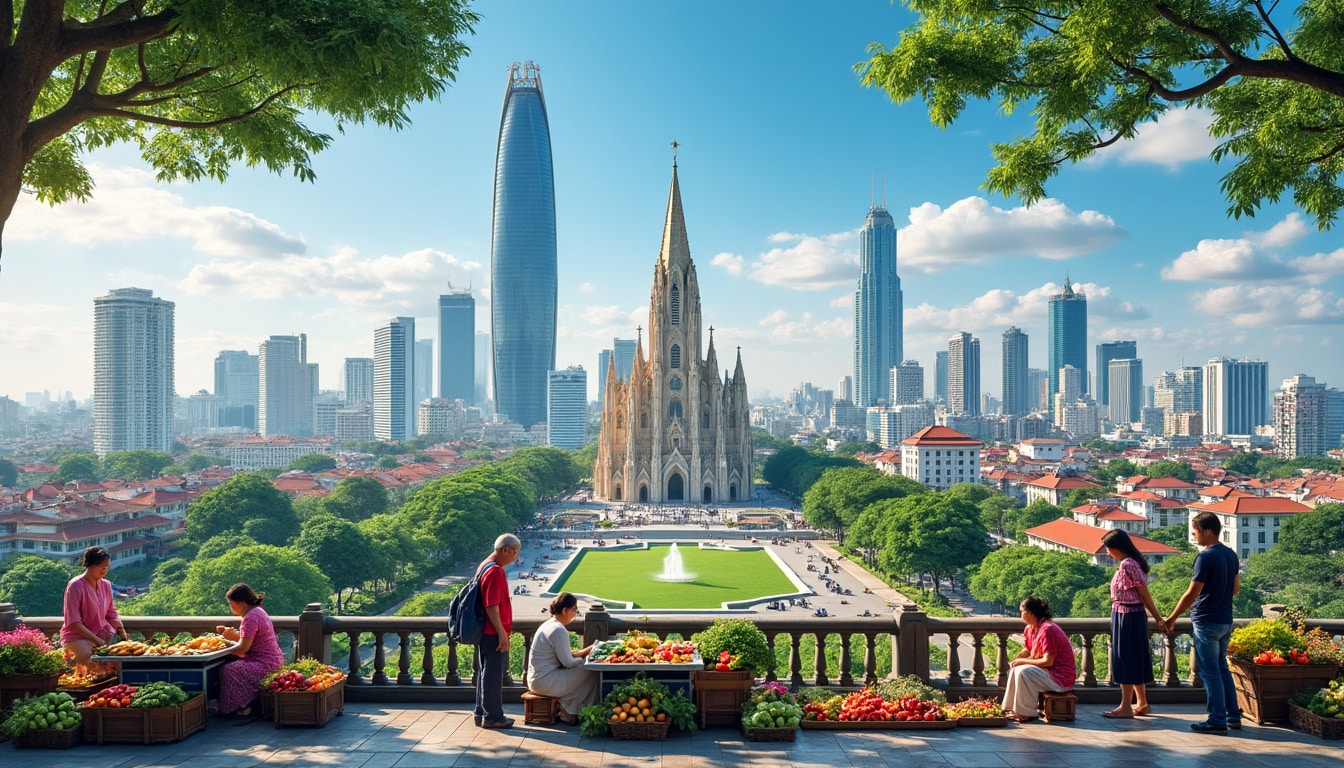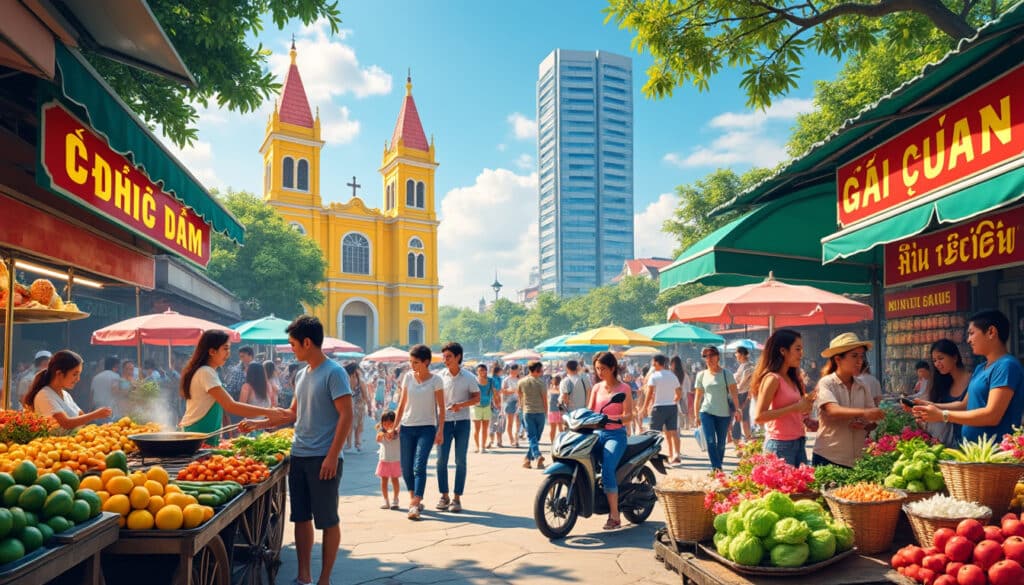Ho Chi Minh City, formerly known as Saigon, stands as a vibrant testament to Vietnam’s blend of tradition and modernity. Nestled between the fertile lands of the Mekong Delta and the bustling southeast, it pulsates with life and energy. As the largest city in Vietnam, its sprawling layout covers more than 796 square miles, embracing over 9.3 million residents. This ever-growing urban landscape is a hub of cultures, industries, and historical narratives. From its roots in ancient Khmer society to its pivotal role in Vietnam’s tumultuous history, Ho Chi Minh City emerges as a compelling tale of resilience and transformation. Offering a medley of architectural wonders, diverse demographics, and a dynamic economy driven by both local and global influences, it beckons explorers and seekers of both the past and the present. 🚀✨
Demographic Profile: Unveiling the Human Tapestry of Ho Chi Minh City
With an estimated population of over 9.3 million people in 2023, Ho Chi Minh City holds the distinction of being Vietnam’s most populous urban area. The city has witnessed an impressive annual growth rate of approximately 2.7%, underscoring its appeal as a destination for both domestic and international migrants. The boom in population is largely driven by the city’s robust economic opportunities and cultural appeal. 🏙️
Most inhabitants identify as part of the Kinh ethnic group, which forms the predominant demographic component of Vietnam. However, the city’s industrial prowess has attracted a diverse expatriate community. With significant foreign investments, many from China, companies like Foxconn and Samsung have established manufacturing outposts here, augmenting the multicultural fabric of the city. The expatriate population adds vibrancy, not only to the economy but to the rich tapestry of cultures found throughout the city. 🌍
| Age Group | Population (2019 Census) | Percentage of Total Population |
|---|---|---|
| 0-9 years | 1,158,399 | 12.9% 😇 |
| 10-19 years | 1,200,969 | 13.4% |
| 20-29 years | 1,790,659 | 20.0% |
| 30-39 years | 1,745,832 | 19.5% |
| 40-49 years | 1,309,359 | 14.6% |
| 50-59 years | 946,859 | 10.6% |
| 60-69 years | 543,327 | 6.1% |
| 70-79 years | 190,974 | 2.1% 👴 |
| 80+ years | 106,704 | 1.2% 👵 |
A significant aspect of Ho Chi Minh City’s social landscape is its religious diversity. Buddhism is the dominant faith, with roughly half of the city’s residents adhering to its philosophies. Meanwhile, a significant portion of the population, approximately 34%, identify with no particular faith. Roman Catholicism accounts for about 12%, showcasing the city’s cultural openness and historical connections to different civilizations. Minorities practicing other religions make up about 4% of the population, adding to the multicultural mosaic.
- Buddhism – 50% 🛕
- No faith – 34%
- Roman Catholicism – 12%
- Other religions – 4% 🕌
The city’s population structure indicates a youthful demographic, with a strong contingent in the 20 to 39-year age bracket, fostering a vibrant, energetic workforce essential for Ho Chi Minh City’s economic dynamism. This demographic profile underscores the city’s potential as a burgeoning hub for innovation, creativity, and economic activity.

Geographical Layout: Exploring the Diverse Landscapes of Ho Chi Minh City
Ho Chi Minh City’s unique geography is as much a part of its charm as its cultural riches. The city is strategically positioned between the broad expanse of the Mekong Delta and Southeast Vietnam, which influences its climate and landscape profoundly. The region is characterized by a tropical monsoon climate, typified by hot, humid conditions throughout the year. The city experiences its hottest temperatures, around 81.3 degrees Fahrenheit (27 degrees Celsius), from May to June, with the majority of its annual 73.5 inches (1,868 millimeters) of rainfall occurring in the winter months. 🌧️
Three primary geographical regions define the layout of Ho Chi Minh City: the downtown area, the lowlands, and the uplands. 🗺️
Downtown Area
The downtown area is a bustling zone of activity. It includes regions like Thu Duc and the Huc Mon district, blending old-world charm with modern architectural feats. This district is characterized by its dense population and constant buzz of activity, encapsulating the spirit of a city continuously on the move.
Lowlands
Located in the south, southwest, and southeast, the lowlands sit at a modest elevation of about 3 feet (1 meter) above sea level. This region is particularly susceptible to the seasonal rainfall, making water management an essential consideration for urban planning. However, the fertility of the alluvial soils in these areas supports agriculture, contributing to local food security. 🌱
Uplands
Conversely, the uplands provide diverse topography, residing in the north, northeast, and northwest, with elevations ranging from 30 feet (10 meters) to 75 feet (25 meters). This diversity in elevation not only contributes to varied urban experiences but also offers potential for future expansion and development. 🌄
| Region | Location | Elevation |
|---|---|---|
| Downtown | Thu Duc, Huc Mon | N/A 🚦 |
| Lowlands | South, Southwest, Southeast | 3 feet 🌾 |
| Uplands | North, Northeast, Northwest | 30-75 feet ⛰️ |
Each geographical feature of Ho Chi Minh City contributes uniquely to its identity, impacting the economic activities, living conditions, and even the cultural practices of its inhabitants. As the city evolves, understanding these geographical contexts is crucial in harnessing its potential and addressing the challenges of urbanization.
Explore more about Ho Chi Minh’s climate and weather patterns.
Economic Landscape: The Engine Driving Ho Chi Minh City’s Growth
Ho Chi Minh City is often dubbed the economic powerhouse of Vietnam, contributing a significant chunk to the national GDP. In 2022, the city’s economy burgeoned to $59.5 billion, equating to 22% of Vietnam’s GDP. This economic sustainability is largely buttressed by its thriving manufacturing sector, driven by competitive labor costs that attract global giants like Foxconn, Intel, and Samsung. Companies such as these not only stimulate local employment but also empower the rise of auxiliary industries surrounding them. 🏭💼
Several key players contribute to this vibrant economic ecosystem:
- VinGroup: A leading private enterprise known for its ventures across various sectors, from real estate and retail to healthcare and education.
- Vietnam Airlines: The national air carrier connecting Vietnam to global markets, further promoting tourism and business travel.
- Masan Group: An entity with wide-reaching investments, particularly in consumer goods and resources.
- TH True Milk and Nutifood: Producers of dairy products enjoyed nationwide, critical in addressing the nutritional needs of the Vietnamese populace.
- FPT Corporation: A technology and communications company accelerating Vietnam’s digital economy.
- Sabeco and BIDV: Key players in the beverage industry and the banking sector, respectively, demonstrating the diversity of commercial activity in Ho Chi Minh City.
- Mobifone: As a major telecoms provider, it bears a significant role in the city’s connectivity and telecommunications infrastructure.
Real estate is another burgeoning aspect of Ho Chi Minh City’s economy, fueled by urban expansion and the inflow of young professionals seeking career opportunities. The demand for affordable housing is on the rise, paralleled by the interests of foreign investors eager to capitalize on this trend.
| Industry | Company | Key Role |
|---|---|---|
| Real Estate | VinGroup | Development & Investment 🏗️ |
| Transport | Vietnam Airlines | Connectivity & Tourism ✈️ |
| Consumer Goods | Masan Group | Market Supply 🛍️ |
| Technology | FPT Corporation | Digital Solutions 💻 |
As Ho Chi Minh City continues to advance economically, challenges such as sustainable development, infrastructure expansion, and the equitable distribution of wealth remain focal points for local governance and policy. Addressing these issues is vital for ensuring that the city remains an attractive hub for both businesses and everyday living in the years to come.
Historical Narrative: The Story of Ho Chi Minh City
The historic lineage of Ho Chi Minh City weaves an intricate tapestry of cultural integration and resilience. Initially settled in the eleventh century, the area that was once Prey Nokor became a thriving port under Cambodian rule. However, following the influx of Vietnamese settlers in the 17th century, facilitated by the Trinh-Nguyen Civil War, it evolved into Saigon, marking the beginning of its Vietnamese legacy. 🔙📜
The 19th century ushered in a new era, as French colonial forces occupied much of Southeast Asia, including Saigon, establishing it as a linchpin of their colony, French Indochina. The colonial influence is evident today in the city’s French-style architecture and urban planning. Yet, the winds of change blew by the mid-20th century. The Vietnamese sought self-rule, leading to a violent struggle against French domination, triumphing at the historical Battle of Dien Bien Phu under Ho Chi Minh’s leadership. 🇫🇷🏰
This triumph, however, segued into the Vietnam War—a conflict marked by ideological divides and international interventions. The U.S. and allies backed the South, while the Communist North received support from the Soviet Union and China. The war culminated in 1975 when North Vietnamese forces seized Saigon, promptly renaming it Ho Chi Minh City in homage to the nation’s revered leader. The tumultuous episodes of warfare and ideological transformation left indelible scars but also found the city emerging stronger and united. 🎖️❤️
Modern Era Development
Post-reunification, the city’s structure and economy were systematically re-imagined. It adopted policies to diminish reliance on foreign imports, with a strong push towards nationalized industry. Yet, over the decades, Vietnam’s government opened doors to a free-market economy, fostering substantial growth and making the city an appealing destination for investors and tourists. Attracting cultural explorers and history aficionados alike, contemporary Ho Chi Minh City stands as a testament to the endurance and adaptability inherent in its citizens.
See how Ho Chi Minh’s climate impacts its historical landmarks.
Today, visitors can witness this remarkable fusion of past and present firsthand through architectural marvels like the Notre-Dame Cathedral Basilica and the Jade Emperor Pagoda, alongside modern skyscrapers and bustling street markets. These landmarks serve as cultural bridges connecting the historical past with an innovative future.
Landmarks and Cultural Heritage of Ho Chi Minh City
Ho Chi Minh City’s variegated tapestry of cultural heritage is reflected in its many landmarks that hold both historical and spiritual significance. This convergence of faiths, beliefs, and histories creates a uniquely compelling environment that captivates visitors and locals alike. ⛩️📷
Religious Sites
One cannot discuss Ho Chi Minh City’s cultural landscape without mentioning its plethora of religious sites. The Notre-Dame Cathedral Basilica of Saigon stands as an iconic example of religious architecture, constructed with materials imported from France and echoing the Notre-Dame de Paris Cathedral. Its construction between 1863 and 1880 highlights the city’s colonial past, while serving as a focal point for Vietnam’s Roman Catholic community.
An equally fascinating site is the Cao Dai Temple, representing the locally founded religion of Cao Dai. Embracing the belief that all religions share fundamental truths, this temple invites devotees of different faiths—from Buddhism to Christianity—to worship in unity. ⛪
The Jade Emperor Pagoda is another revered landmark, housing altars dedicated to Buddhist and Taoist deities, offering a spiritual oasis for those seeking tranquility amid urban hustle and bustle. Another prominent attraction, approximately an hour from the city, is the Ben Dinh Tunnels. These historic war remnants paint a stark picture of the Vietnam War era’s clandestine operations with their extensive network of underground passages.
Modern Cultural Attractions
While the city embraces its ancient heritage, there’s also vibrancy in its modern attractions. The diversity in dining options, the arts scene, and entertainment provides a well-rounded cultural experience that serves all palates and preferences. Contemporary galleries and art spaces exhibit local talent and global artists, fostering a creative dialogue that resonates globally.
- The historic Ben Dinh Tunnels: A glimpse into war history 🎥🚇
- The vibrant street markets: A burst of color and flavor 🛒🌶️
- The thriving arts scene: Catch a glimpse of Vietnam’s modern artistic expressions 🎨
- Dining delights: From pho to haute cuisine, the city caters to all tastes 🍲✨
| Landmark | Type | Significance |
|---|---|---|
| Notre-Dame Cathedral Basilica | Religious Site | Colonial Architecture 🏰 |
| Cao Dai Temple | Religious Site | Spiritual Unity 🤝 |
| Ben Dinh Tunnels | Historical Site | War Legacy 🚇 |
| Jade Emperor Pagoda | Religious Site | Buddhist & Taoist Shrine ⛩️ |
The city’s landmarks and their well-preserved stories offer an insightful journey into the layered complexities of Ho Chi Minh City’s culture and history, ensuring that each visit can be tailored as a unique blend of exploration, education, and enjoyment. 🌟
Learn about how weather shapes these iconic sites!
FAQ About Ho Chi Minh City
What is the best time to visit Ho Chi Minh City?
The best time to visit is during the dry season, from December to April, when the weather is more favorable for exploring the city’s attractions. ☀️
What are the must-visit landmarks in Ho Chi Minh City?
Key landmarks include the Notre-Dame Cathedral Basilica, the Cao Dai Temple, Jade Emperor Pagoda, and the Ben Dinh Tunnels. Each offers a unique glimpse into the city’s history and cultural diversity. 🕍⛩️
Is Ho Chi Minh City a safe travel destination?
Yes, Ho Chi Minh City is generally considered safe for tourists. However, it’s advisable to exercise common travel precautions, such as being aware of your surroundings and securing belongings, especially in crowded areas. 🏙️🔒
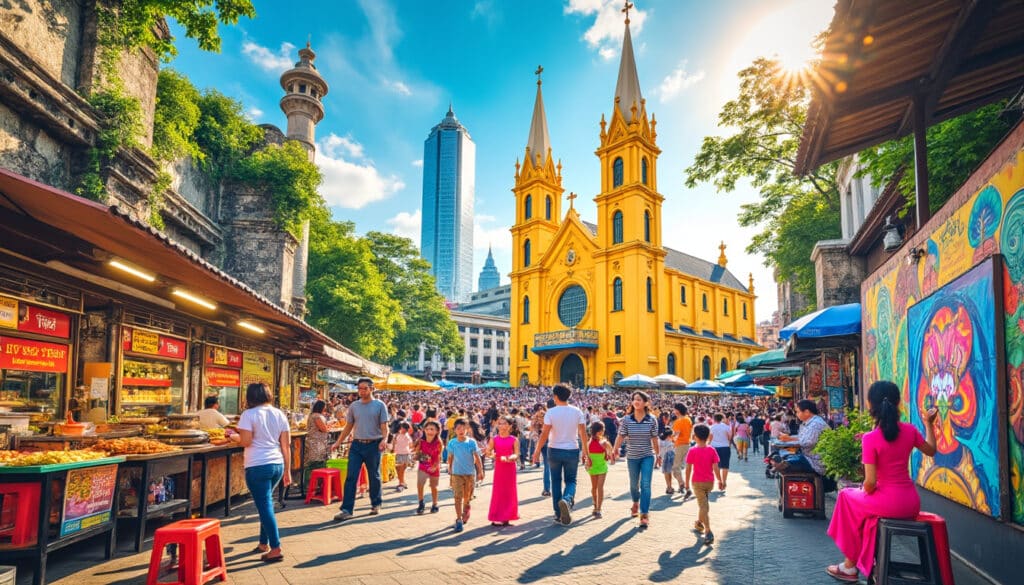
Fun Facts & Curiosities About Ho Chi Minh
Ho Chi Minh City, also known by its former name Saigon, is not just a bustling modern metropolis but a city filled with curious contrasts and intriguing historical narratives. From its storied past as the capital of South Vietnam to…
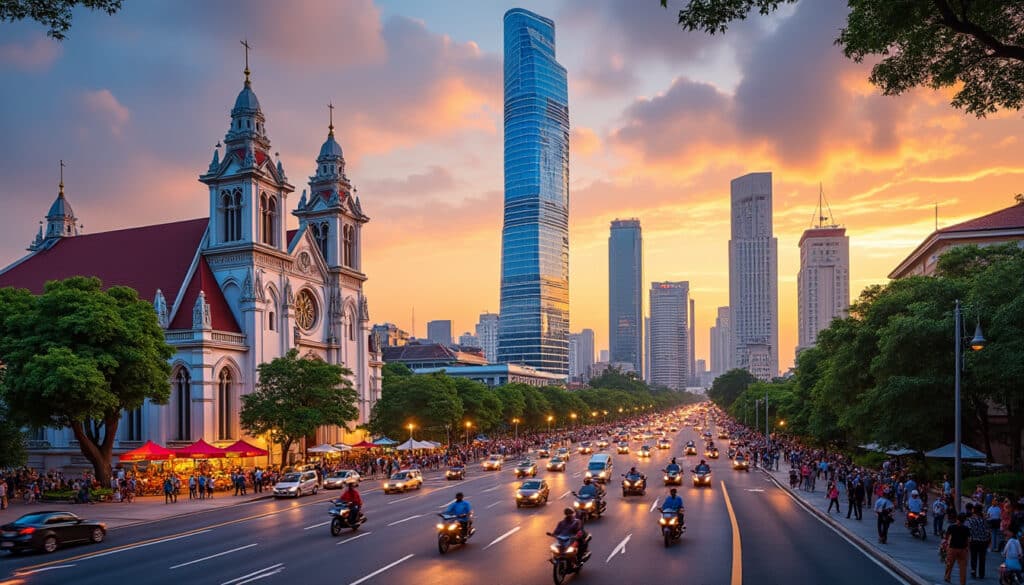
Architecture and urban features of Ho Chi Minh
Ho Chi Minh City, the bustling economic heart of Vietnam, is a captivating blend of the old and the new, a testament to its ever-evolving architectural landscape. From its historical roots as Saigon, with traditional Vietnamese and French colonial influences,…
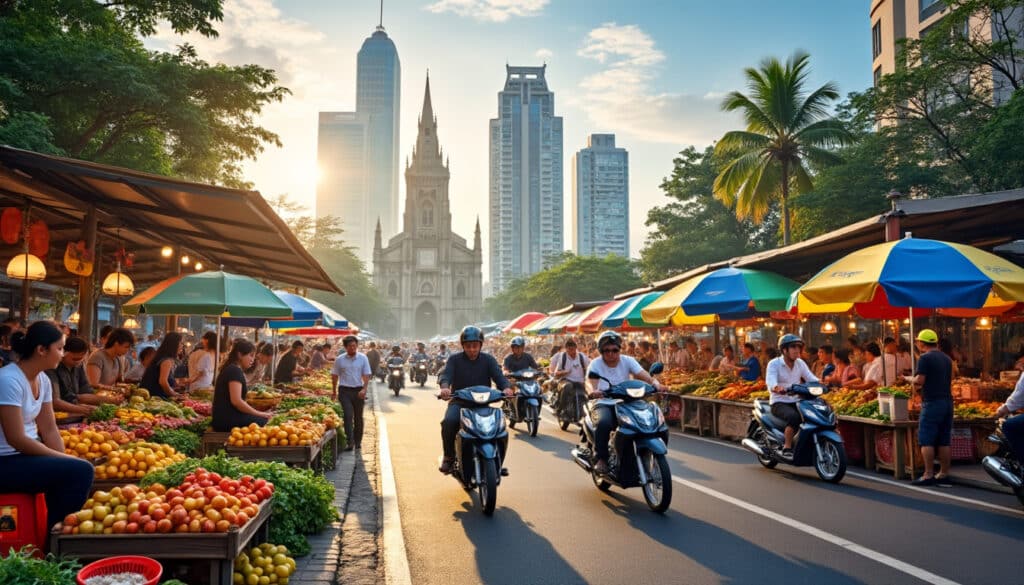
Ho Chi Minh City, once known as Saigon, is a vibrant and bustling metropolis that captures the essence of a city constantly on the move. Life here hums with an eclectic mix of tradition and modernity, where the past and…
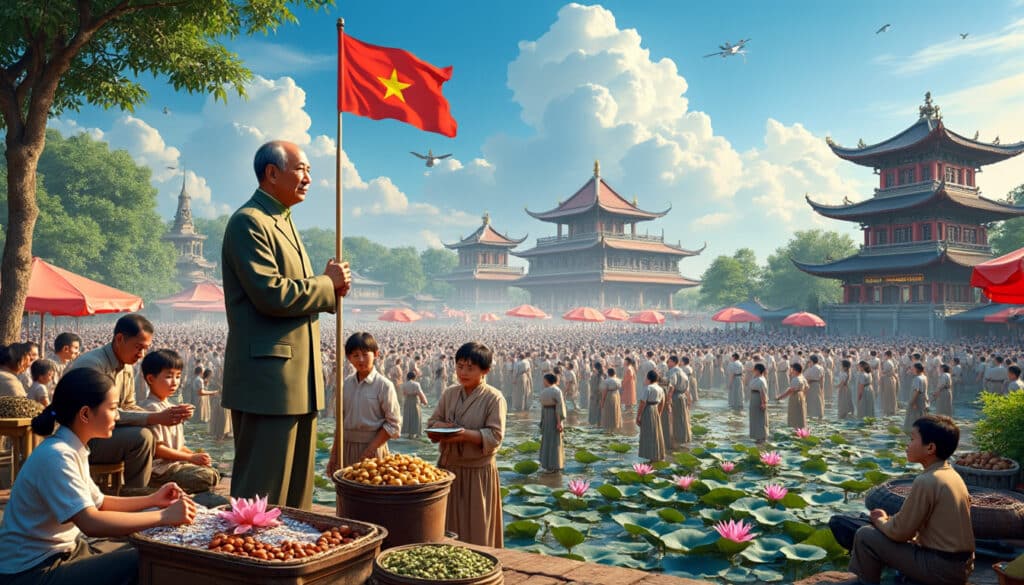
Ho Chi Minh is a name that resonates deeply within the fabric of Vietnam’s history, symbolizing the relentless spirit of independence and nationalist fervor. Known for leading his nation through tumultuous times, Ho Chi Minh was not only a revolutionary…
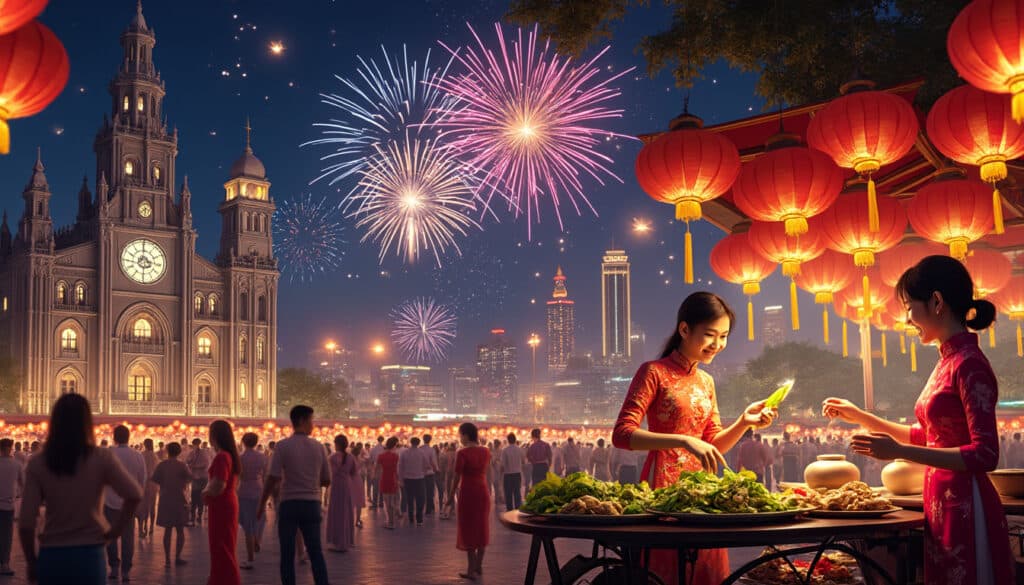
Holidays and celebrations in Ho Chi Minh
Ho Chi Minh City, with its rich tapestry of cultural influences and historical significance, stands as a beacon of celebration in Vietnam. Here, traditions old and new intermingle, creating a vibrant landscape of festivities. From the pulsating energy of the…

Language and spelling of Ho Chi Minh
In the bustling streets of Ho Chi Minh City, language serves as both a bridge and a barrier. The city’s unique linguistic landscape, a product of its rich history and rapid modernization, reflects the dynamic interplay between tradition and change.…
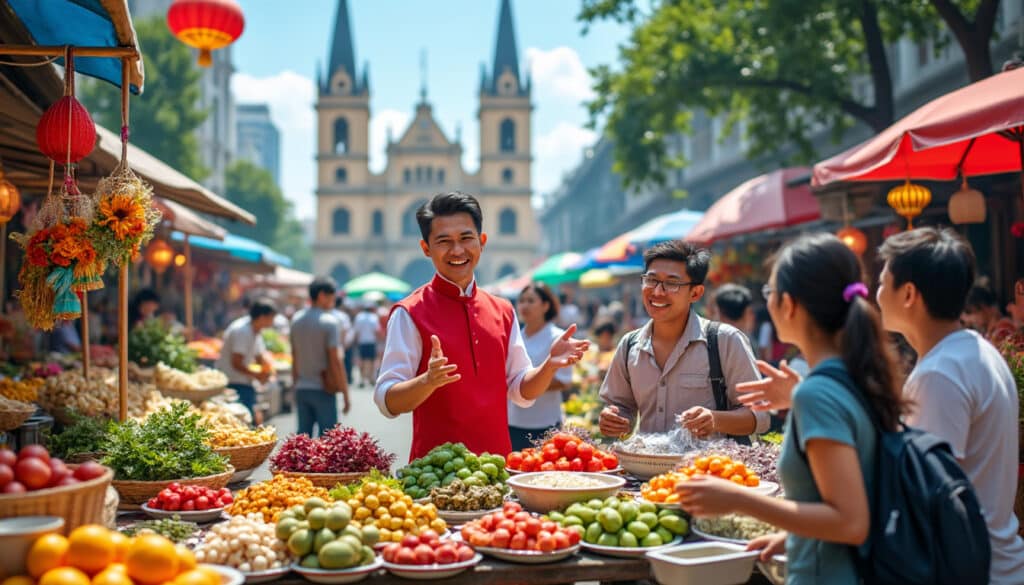
Local tips for tourists in Ho Chi Minh
Ho Chi Minh City, a bustling metropolis teeming with energy, is a gem in Southeast Asia that offers an intoxicating blend of history, culture, and modernity. From its vibrant street markets and delicious street food to its historical sites and…
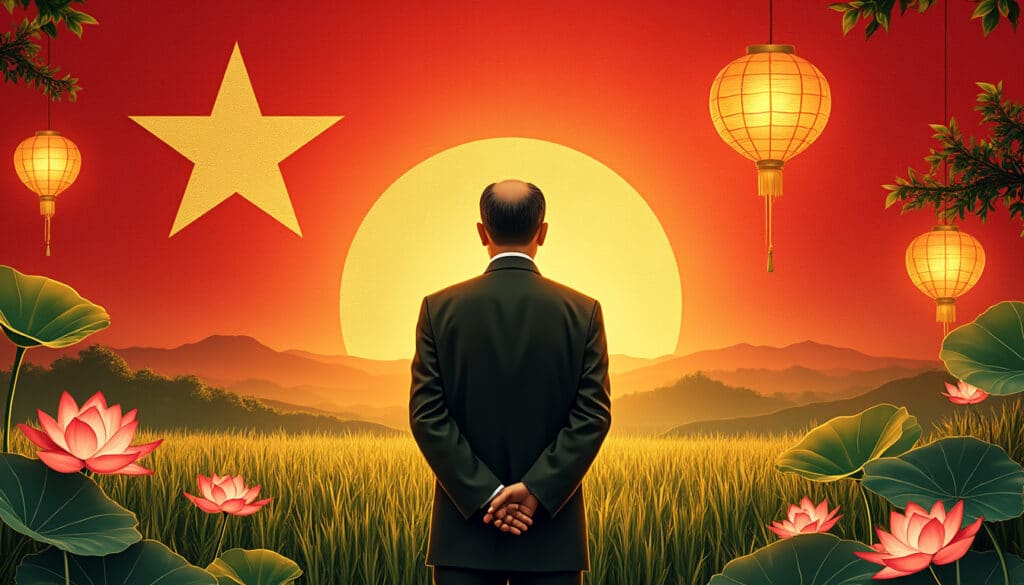
Names, flags, and identity of Ho Chi Minh
The legacy of Ho Chi Minh is deeply interwoven with the identity and history of Vietnam. Known by many names and represented by various flags throughout his life, Ho Chi Minh remains an iconic figure whose influence extends beyond Vietnam.…
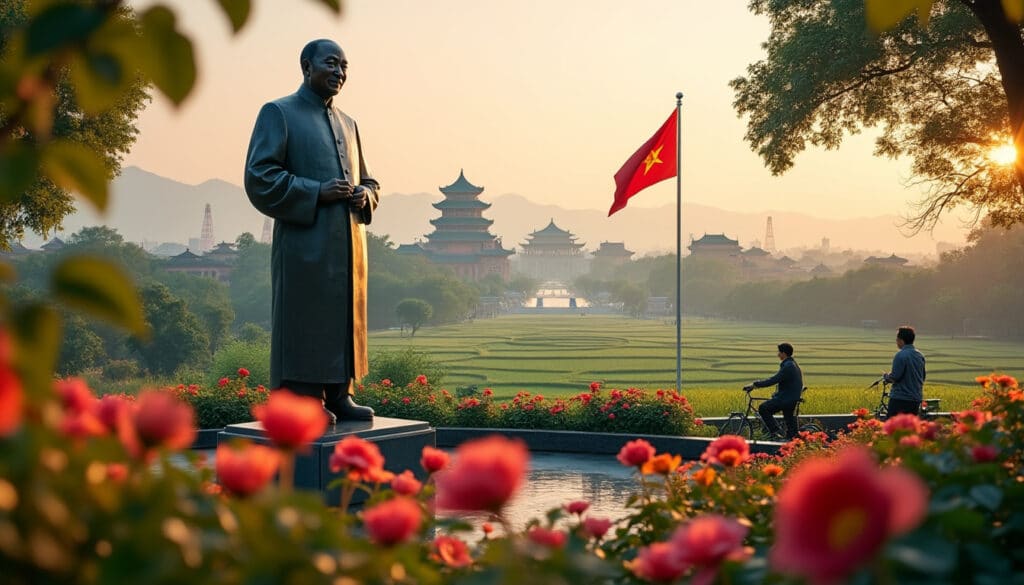
Reputation and identity of Ho Chi Minh
In the heart of Vietnam, the legendary figure of Ho Chi Minh continues to captivate minds, dominating discussions related to national identity and the nation’s storied past. An icon of resilience and strategic acumen, his image is immortalized in everything—from…
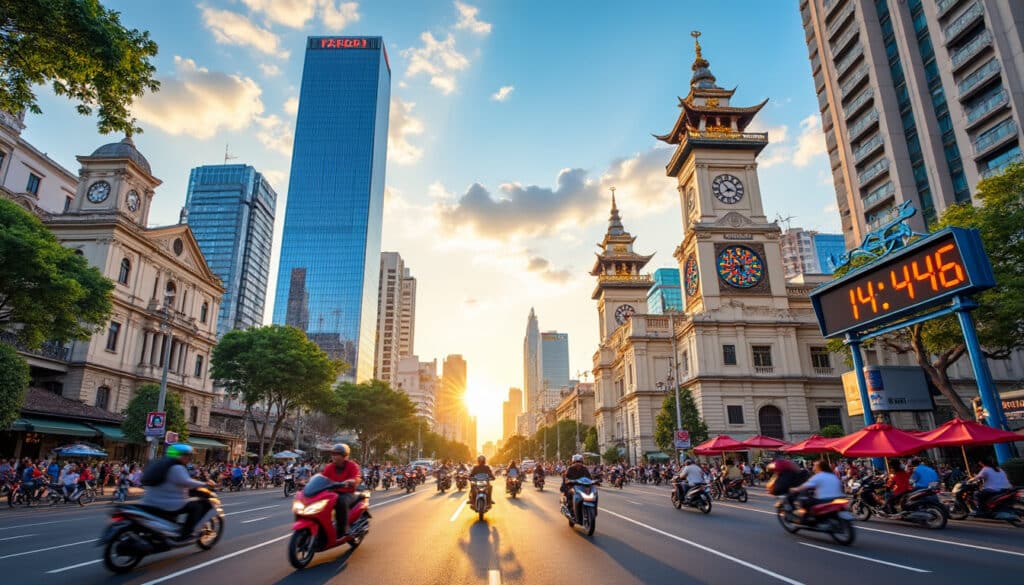
Time and time zone in Ho Chi Minh
Ho Chi Minh City, a bustling metropolis in Vietnam, is a city that never sleeps, where the hum of scooters is the soundtrack to daily life and the aroma of strong coffee permeates the air. It’s a place where time…
Unusual facts and social issues in Ho Chi Minh
Ho Chi Minh City, often referred to as Saigon, is a vibrant metropolis teeming with history, culture, and an array of fascinating quirks. Despite its rapid modernization, the city retains an intricate blend of past and present, where unique facts…
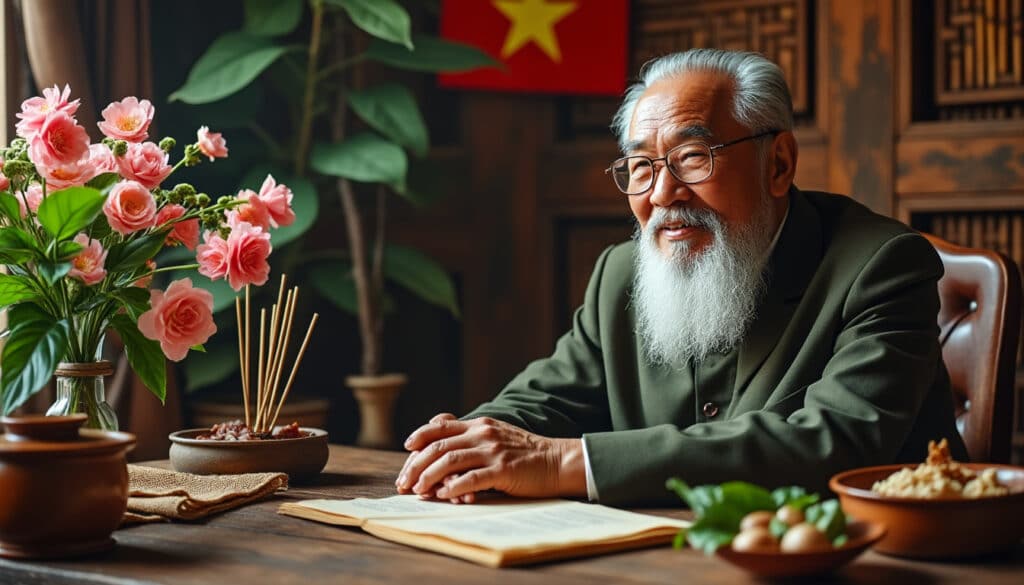
What does Ho Chi Minh look, smell, feel like?
Ho Chi Minh City, often referred to as Saigon, is a bustling metropolis in southern Vietnam that offers an unparalleled sensory experience. From the sleek skyline that reflects its modern aspirations to the fragrant aromas that fill the vibrant streets,…

